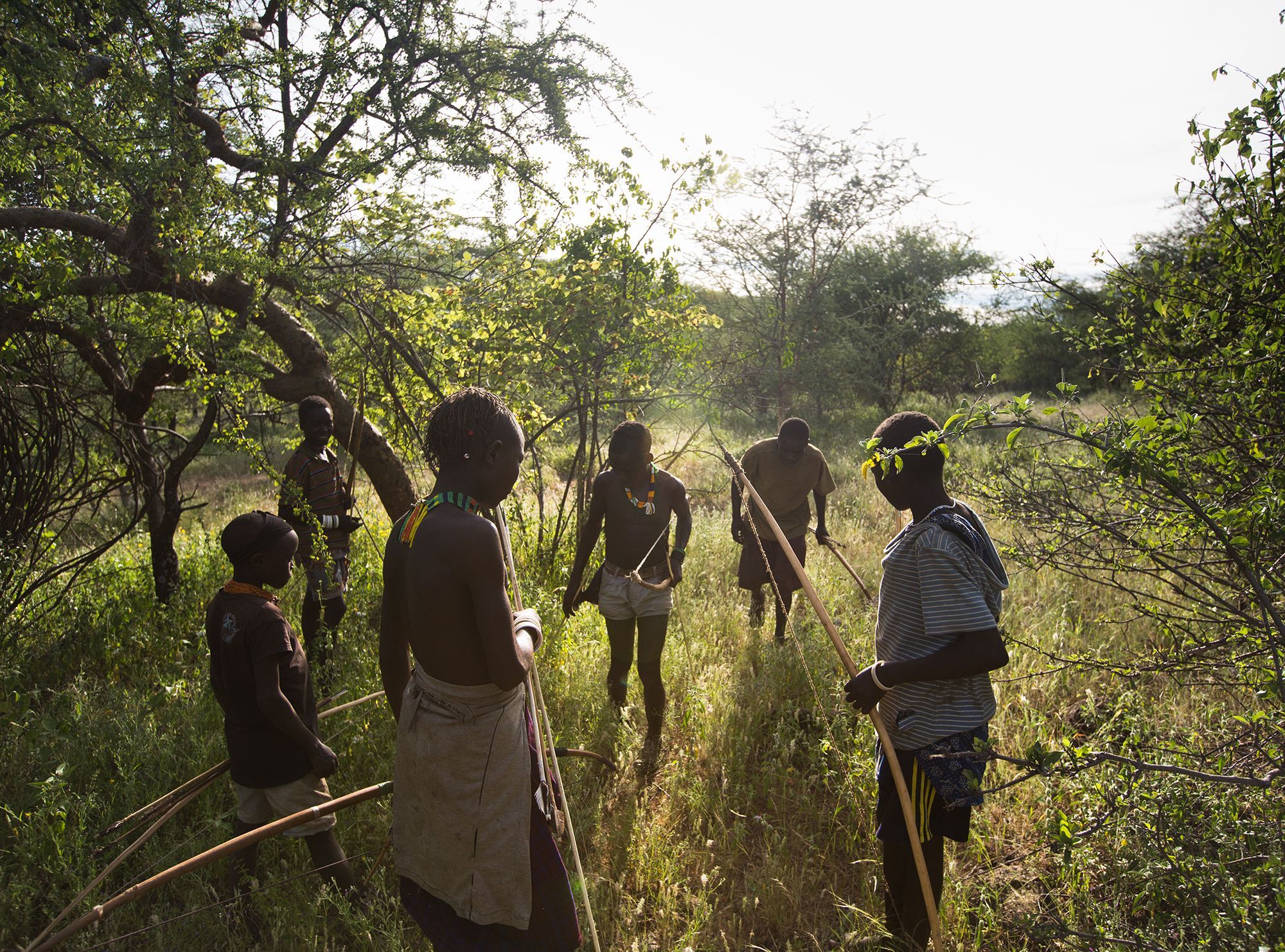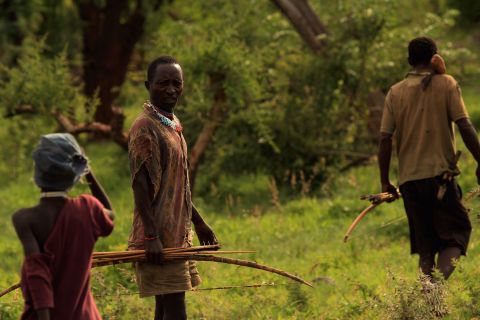Spoken language small clans hunting-gathering These are characteristics of the Paleolithic period. Such people are generally nomads moving on as food supplies dwindle.

The Hunter Gatherers Lifestyles And Culture Timemaps
A hunter-gatherer is a human living a lifestyle in which most or all food is obtained by foraging gathering edible wild plants and hunting pursuing and killing of wild animals in the same way that most natural omnivores do.

. New Book Argues That Hunter-Gatherers May Be Happier Than Wealthy Westerners. Hunter gatherers with or without a dash is the term used by anthropologists and archaeologists to describe a specific kind of lifestyle. Although most of the gathering is usually done by women a society in which men completely abstained from gathering easily available plants has yet to be found.
Goats and Soda Anthropologist James Suzman has lived with one of the last groups of hunter-gatherers. They move for severalreasons. 2 trapping which is the passive capture of prey mammals birds or fish by means of prior investments in pitfalls traps nets weirs and other technical means.
Gathering plants and berries D. Large cities with unlimited resources. The use of rivers for irrigation in agriculture began in about _____.
Hunting and gathering societies A are responsible for most of the environmental degradation of the planet B occur nearly everywhere but are especially common in Europe C include about 15 of the worlds people D are found in isolated places in the world E are characterized by large concentrations of people. Thomas Hobbes who described life in the rude state of nature as solitary poor nasty brutish and short This view fit well with the Social Darwinist views of nineteenth and early twentieth centuries. Hunter-gatherers occupied the lowest rung of the evolutionary ladder leading to western civilization.
Hunter-gatherers were prehistoric nomadic groups that harnessed the use of fire developed intricate knowledge of plant life and refined. The hunter-gatherer lifestyle was what all human beings followed from the Upper Paleolithic of. Let me start with a discussion of how it is possible to describe hunter-gatherer societies as a peoples that are or more precisely in most cases were affluent and egalitarian.
Simply hunter-gatherers hunt game and collect plant foods called foraging rather than grow or tend crops. Generally women hunt the majority of the small game while men hunt the majority of the large and dangerous game but there are quite a few documented exceptions to this general pattern. Large numbers of people living in small villages.
In most HG societies there are five categories of food energy procurement. Sedentary Agriculture Case Study. Why did hunter-gatherer societies switch to sedentary agriculture.
Foraged wild resources are obtained by a variety of methods including gathering plants collecting shellfish or other small fauna hunting scavenging and fishing. Gathering plants and berries. Women had no role in acquiring food.
Small nomadic bands of people. The typical hunter-gathering societies are best described as. The transition of hunter-gathering groups to sedentary agriculture initially began due to the simplicity behind agriculture and animal husbandry.
It is a subsistence lifestyle practiced by all early human societies. The typical hunter-gathering societies are best described as. Lee studied the Kung of the Dobe area in the Kalahari Desert also known variously as Bushmen the San people or the Juhoansi and noted that they required.
1 hunting involving the active pursuit of mammals reptiles or birds. Based on all the text you have read which of the following does NOT represent characteristics of ancient hunter-gatherers. 3 fishing using a wide range of active techniques.
Hunter-gatherer societies are human beings who obtain their food from the bounty of nature hunting animals and gathering wild plants. Large cities with unlimited resources. They regularly searched for food either by hunting animals or gathering nuts berries and plants.
Hunter-gatherers has become the commonly-used term for people who depend largely on food collection or foraging for wild resources. And its made. Hunter-gatherer societies stand in contrast to the more sedentary agricultural societies which rely mainly on cultivating crops and raising.
1 search new food supplies2 moved to eat a large kill 3 seasonal changes and 4 conflict within thegroup 112. Moderate numbers of people living in permanent villages. Updated on March 30 2020.
The typical huntergathering societies are best described as A. What was the typical role of women in hunter-gatherer societiesA. Small nomadic bands of people.
The process of growing crops proved to be a much more reliable method of obtaining food than. Which of the following is not a characteristic of the Paleolithic period. Modern hunting and gathering societiesare usually nomadic and an inevitable result of their subsistencetechnology.
The original stereotype of hunter-gatherer societies did indeed not paint them in rosy colours with regards to affluence. Large numbers of people living in small villages. 10 Questions Show answers.
Questioning the notion that the hunter-gatherer way of life is a precarious and arduous struggle for existence Lee instead described a society of relative comfort and abundance. Moderate numbers of people living in permanent villages. The typical role of women in hunter-gatherer societies was.

Hunter Gatherer Culture National Geographic Society



0 Comments